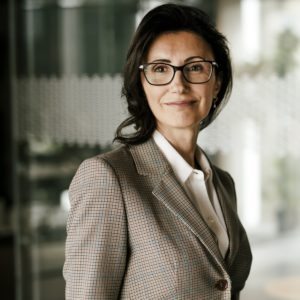:quality(80)/business-review.eu/wp-content/uploads/2021/12/spaces-pic.jpg)
The Global Wellness Institute believes that residential real estate is the next frontier that will be radically transformed by the wellness movement. Our homes, communities, and surrounding environment directly affect our daily behaviours and lifestyles, and together these determine up to 80-90 percent of our health outcomes. Since our homes are typically our most important personal investment and expenditure, it is only logical that they should also be an investment in our health and wellbeing.
By Romanita Oprea
The pandemic has completely transformed the concept, function, and value of the home. “It became our everything, from where we worked to where we exercised, and during this long crisis, more people have questioned where and how they want to live, what they want in a home and a community. The short answer is “more wellness”: more safety; nature and sustainability; space and serenity to work; more purpose, meaning, and true community. Many people are now seeking homes and communities that are purpose-built to deliver more physical, mental, and social wellbeing. This is not just a temporary result of the pandemic, but the outcome of bigger cultural, environmental, and demographic shifts that will play out over decades,” the Global Wellness Institute writes.
This reshuffling of our priorities has created a powerful opportunity within the real estate industry, driven by growing consumer demand for products that support wellness, personal growth, and environmental values.
In fact, at its core, wellness real estate is really all about creating built environments – from homes and hotels to offices and apartment buildings – that are proactively designed around the occupant’s holistic health. Wellness is no longer an esoteric nicety, but a powerful movement that will shape huge facets of the industry over the coming years.
A very profitable market
In this context, international specialists believe that the global wellness real estate industry will reach a value of USD 197 billion by 2022, having grown by 6.4 percent annually since 2015. In North America alone, the market is worth USD 52 billion, with 1.3 million buyers each year seeking wellness communities and wellness homes.
This growth isn’t just being driven by ecologically-aware Millennials and Gen Xers – it’s being driven by the world’s wealthiest individuals, too. 90 percent of luxury homeowners say that their personal wellness is their top priority and that real estate offerings that allow them to practice personal wellness (including meditation spaces, home spas, home gyms, etc.) are extremely attractive. Additionally, nearly 30 percent of consumers from all income ranges are willing to pay more for real estate that prioritises wellness.
As shown by the Global Wellness Institute, there are over 740 wellness lifestyle real estate and community developments built, partially built, or in development around the world, across 34 countries—and this number is growing every day. These include master-planned communities, multifamily housing, urban districts and mixed-use projects, resort/spa-based real estate, and other types of projects.
Wellness lifestyle real estate is an industry that recognises, and has the potential to meet, today’s immense health challenges. It represents a shift that explicitly puts people’s wellness at the centre of the conception, design, creation, and redevelopment of our homes and neighbourhoods. Importantly, this movement does not have to start from scratch; it can borrow and learn from many historical/current movements and integrate their best features through a multidimensional wellness lens. Many elements of the green/sustainable building movement, design-driven movements, the food movement, New Urbanism, intentional communities, and others are already being adapted, mixed, and incorporated in innovative ways into new and upcoming wellness-focused residential projects and communities.

“The pandemic has hit us in many ways: first of all, it has had an impact on people’s mindset, psychology, behaviour, and many other areas besides the economic and financial dimensions. If we’re talking about wellness, the impact is two-sided: on one hand, wellness has been more carefully addressed (people started to search for wellness products and facilities in order to destress, they started going to the gym or the spa, and so on), but on the other hand, restrictions have been forcing some people to give up on old habits and have cut off their access to wellness activities or products,” said Ramona Iacob (Predescu), Romania country manager at IWG.
Moreover, she believes that a space that creates wellbeing should be able to provide the people occupying it with inner peace, comfort, and a relaxing atmosphere, and this can be achieved by adding elements and programmes. For example, office spaces can be enhanced with break areas, plant corners, relaxation areas, reading corners, even small games corners providing cards, Jenga or colouring books, massage hours, posture workshops, yoga time in the office, etc. “But it is also very important to think about what people use the premises for, about their overall attitude and mindset, and what kind of energy is transmitted to the occupiers by the staff who manages such spaces. All these elements should be in the mix, and the final test is how the consumer feels, whether they have a good experience, whether they feel welcome. That’s what will make a difference,” Ramona Iacob added.
On his turn, Mihai Păduroiu, CEO Office Division One United Properties, considers that the pandemic context has definitely changed many criteria in the real estate and people are now more aware than ever that a healthy environment contributes to a healthy life and work. “What we have noticed is an increased interest of the companies for green, certified office buildings that focus on the employees’ wellness. On the other hand, when it comes to residential units, people tend to do an upgrade form smaller apartments to bigger and more comfortable ones that meet all their present lifestyle and can efficiently respond to their online school needs, home office or access to green areas and sports,” said Paduroiu.
The companies’ agenda has fundamentally changed when it comes to identifying an office space. In the long run, these changes in the companies’ criteria are positive. We are faced with a health crisis and companies understood how important it is for their office to have an international certification regarding the health standards. Energy certification is a standard today from One United Properties’ point of view and any company should commit to a sustainability policy and have a green certified office. “The moment you call people back to the office, you can’t offer them a building from the ’90s or an arrangement that hasn’t been rebuilt, sanitized for years. Today, companies prioritize these health criteria over other business criteria,” added Paduroiu.
Adapting to the market and growing
In response to the growing market demand, new design concepts and certifications have been rapidly emerging. According to Proven Partners, Biophilic design is an emerging architectural field that creates spaces in buildings and communities to help support everything from cognitive function and physical health to psychological wellbeing, reducing blood pressure and stress hormone production while syncing our busy lives with our natural rhythms. The WELL Building Standard puts health and wellness at the centre of design and construction decisions, measuring, certifying, and monitoring features of the built environment that impact human health and wellbeing, through air, water, nourishment, light, fitness, comfort, and mind.
A study conducted by Skanska focusing on how the pandemic has changed CEE employees’ perception of the ideal work space found that Romanians especially have started to pay more attention to wellness issues, and that the design factor has become an important motivator in their decision to return to the office. A high share of Romanian employees (33 percent) are now interested in green, open-air spaces and outdoor areas where they can work, but also rest and relax. After a year of working from the comfort of their own homes, Romanian employees are also paying more attention to the comfort-related factors in the office, which include the quality of the furniture (11 percent) and rooms designed for relaxation (19 percent). Other important wellbeing factors for Romanian employees include access to high-quality and healthy meals (31 percent), proper lighting that does not tire the eyes (27 percent) and air quality, as 17 percent of respondents stated that they did not want to spend their time in a confined space with air conditioning. Health and safety are also among Romanians’ top priorities.

“The environment has a direct impact on both physical and mental health. Wellbeing is also influenced by the floor space configuration and congestion level, noise, inside air quality, and light. Through WELL Certifications standards, Skanska offers a wellbeing measuring system that is built around 7 elements and increases office life quality through building features. These elements are air, water, nourishment, light, fitness, comfort, mind. Therefore, a space that creates wellbeing for its occupants pays close attention to these 7 crucial factors,” said Aurelia Luca, executive vice-president of Skanska’s CEE operations for Hungary and Romania.
Clean air, good quality water, nourishing and healthy food are at the base of a balanced lifestyle. Light plays an important role in sustaining the body’s circadian rhythm and ensuring good quality sleep at night, therefore Skanska offices provide professional lighting systems that always provide comfort and do not tire the eye. Nonetheless, all the layers of comfort (thermal, acoustic, ergonomic, olfactive, and air humidity) should be optimised to best suit the characteristics of workplace and the needs of its tenants. “The working space should offer employees the opportunity to have an active lifestyle and encourage exercise. Rooftop running tracks and strategically placed interior stairs are some of the solutions that Skanska implements in its office buildings. Campus 6.2 & 6.3 were the first office buildings in Romania to have rooftop running tracks,” Luca added.
Last but not least, the mental wellbeing of employees should be a priority in every office. According to Luca, the office building should be designed as a hub that makes it easy to form and consolidate communities, promoting cognitive and emotional health. Skanska buildings integrate green co-working outdoor areas combining two essential elements: human connection and nature connection. Easy access to exterior spaces improves both mental and physical condition. “Romanian employees are looking for office spaces that can easily adapt to change and that can always be reinvented in order to meet new needs. The post-pandemic office space needs to always make employees feel good and safe,” Luca noted.
For Mihai Paduroiu, wellbeing is a complex concept focusing on many aspects, from interior design to technical details making up a space. In terms of design, wellbeing is concerned with a practical yet balanced space that ensures comfort. “Within the group we have an arrangement and fit-out company, Lemon Interior Design, that enables us to offer an integrated package that can cover all the needs of the tenants, from the relocation stage to moving to a turnkey space. An important aspect that our colleagues from Lemon Interior Design work with is mixing an office space with details inspired from the residential arrangements, in order to transform the workplace in a more comfortable and welcoming one,” said One United Properties Office Division’s CEO. Furthermore, according to him, wellbeing certifications mean that the respective building is energy efficient, it provides HVAC system with heat recovery and fresh air intake, efficient LED lighting, high-speed elevators with optimized waiting time and opening windows, just to mention a few. These are all elements that guarantee a safe return to the office and a more calm and productive work environment.
“Our efforts are directed at indicating how to create a work environment that will encourage people to work in offices and at the same time uphold the company culture. Together with our partners we have tried to redefine the future of the workplace and adapt the concept to help respond to their needs. The office of the future will not be just some location that employees must go to every day, but a place they want to work in. It will facilitate socialising, sharing experiences, and finding the balance between personal life and work life,” says Adam Targowski, environmental director at Skanska’s commercial development business unit in CEE.
To adapt to the current situation, Skanska has developed the “Care for Life Office Concept,” which focuses on making employees feel safe when they come back to work.
The developer collaborated with external experts – designers, an epidemiologist, an exterior designer, and architectural studio ARUP – to provide clients with the best workplace solutions. It includes tenant consulting services and safety protocols to mitigate the transmission of COVID-19 and/or any other potentially infectious diseases in the future. The concept comprises four areas: air quality management, touch-free solutions, social distancing measures, and building management.
Moreover, according to Paduroiu, besides the Green Homes, LEED and WELL certifications of buildings, facilities and services that complement the basic function of office and residential projects are very important. And they have noticed an increased interest of clients in multifunctional real estate, which is a project encompassing housing units, office spaces and commercial services.

“Our company has been a promoter of such innovative real estate with projects like One Floreasca City, One Cotroceni Park, One Herăstrău Towers just to name a few. The trend to optimize time, to have access to all the daily services just withing 20 minutes’ walk, let’s say, has started before the pandemic and is now highly increasing. We see clients interested in efficient green buildings that offer them the possibility to live in a modern, multifunctional apartment, to have access to green spaces and cafes, restaurants, laundry, or banking services and, why not, to work withing the same compound,” added Mihai Paduroiu.
“From now on, we want to help offices reclaim the important role they play in people’s professional lives: whether we are talking about their contribution to the integration of new employees, to strengthening teams, maintaining organisational cultures or resetting boundaries between employees’ professional and personal lives. In order for this to happen, it’s absolutely necessary for workspaces to readapt and contribute to the wellbeing of employees,” concluded Aurelia Luca.



:quality(80)/business-review.eu/wp-content/uploads/2024/03/Screenshot-2024-03-27-at-1.31.53 PM.png)




:quality(80)/business-review.eu/wp-content/uploads/2024/02/IMG_6951.jpg)

:quality(80)/business-review.eu/wp-content/uploads/2024/04/COVER-1.jpg)



:quality(80)/business-review.eu/wp-content/uploads/2024/04/cover-april.jpg)
:quality(50)/business-review.eu/wp-content/uploads/2024/04/Slide1.png)
:quality(50)/business-review.eu/wp-content/uploads/2024/04/1_Transport.jpg)
:quality(50)/business-review.eu/wp-content/uploads/2024/04/0x0-Supercharger_18-scaled.jpg)